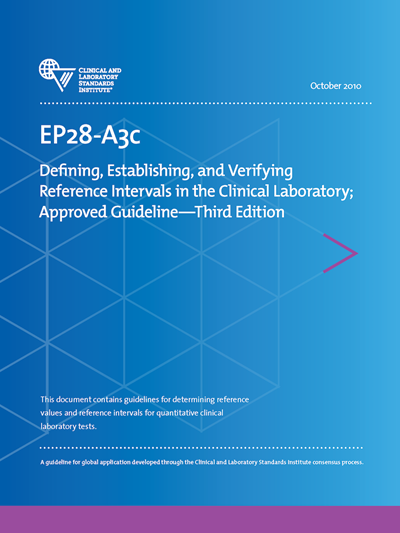CLSI EP28
Defining, Establishing, and Verifying Reference Intervals in the Clinical Laboratory, 3rd Edition
This document contains guidelines for determining reference values and reference intervals for quantitative clinical laboratory tests.
This document is available in electronic format only.
This reaffirmed document has been reviewed and confirmed as suitable to remain published without revision to content, as of April 2016. The document’s next scheduled review is generally five years after the reaffirmation date.
Member price:
List Price:Details
Chairholder: Gary L. Horowitz, MD
Date of Publication: October 19, 2010
Order Code PDF: CLSI EP28A3CE
ISBN Number: 1-56238-682-4
Order Code Print: print not available
Edition: Third
Pages: 72
CLSI EP28 Additional Details
If interested in ordering larger quantities of this document in print, please contact us here.
A CLSI-IFCC joint project.
The U.S. Food and Drug Administration (FDA) has evaluated and recognized this approved-level consensus guideline for use in satisfying a regulatory requirement.
A document competency quiz, which is worth 2 P.A.C.E. continuing education credits, is available for this document! Click here for more information.
This document was formerly published as C28-A3c.

